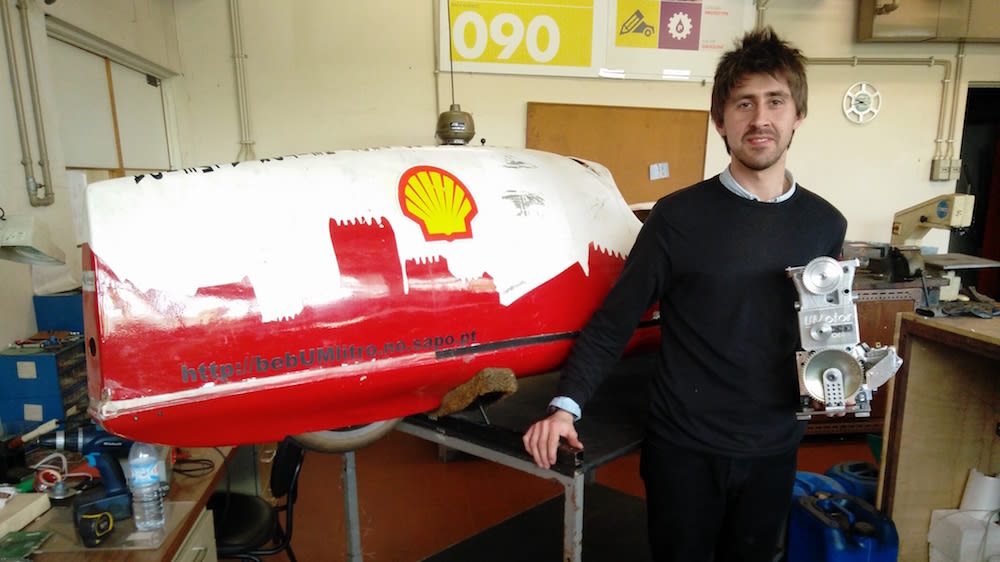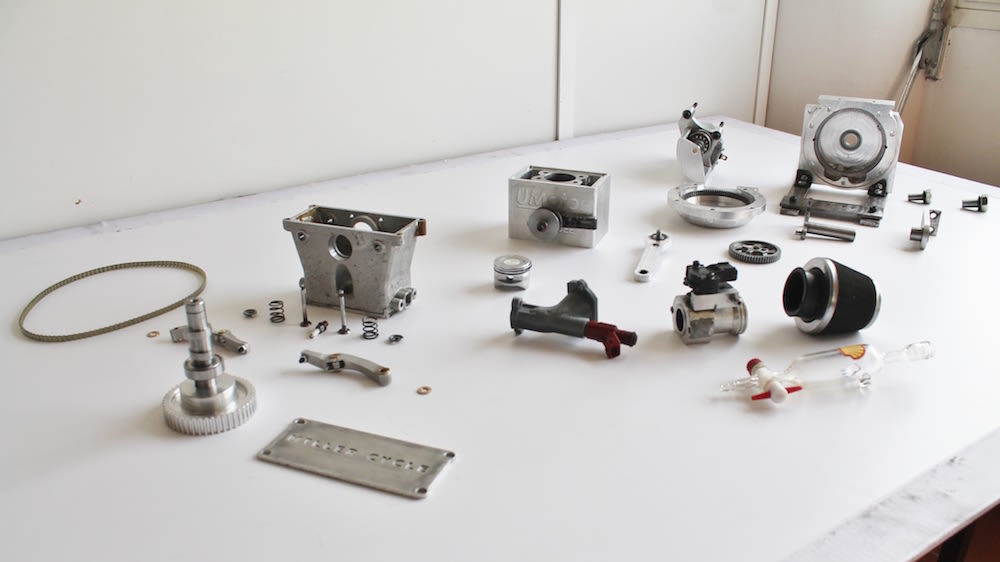

Internal combustion engines suffer from fairly low efficiency (internal thermal losses and wasted hot exhaust enthalpy). Small-scale engines' surface area/volume ratio combustion chamber leads to higher heat transfer losses and inefficient combustion. Furthermore, the market for micro combined heat and power (micro-CHP) system has solutions with high ratios of heat/electricity (4:1, 3:1, 2:1), but none with lower ratios, which would require very highly efficient engines.
The “UMotor” is being developed at the University of Minho and aims at revolutionizing the way small engines attain high efficiency. It uses a bundle of technologies in conjunction with an innovative and unconventional crankshaft enabling the over-expansion of the exhaust gases. By having an expansion/compression ratio of 2:1, most of the enthalpy of the burned gases can be converted into useful work. Therefore, the volume of air-fuel mixture that enters the engine is burned and expanded into a large volume, harnessing most of the energy content of the fuel.
Additionally, an "internal regeneration" technology enables a further hike in efficiency, by internally cooling the combustion chamber walls through water spray injection. This water vaporizes into expanding steam, cooling the walls and acting on the piston, therefore enhancing the engine efficiency beyond 45%.
The first engine prototype was tested in a super-efficient car prototype participating in the Shell Eco-Marathon competition (with a best result of over 1500 km/L). It also has strong potential for applications where high engine efficiency plays an important role in the market success, such as range-extenders for electric vehicles. But the main target is to develop it as a micro-CHP system: by being a stationary application, the "internal regeneration" technology is suitable for implementation. Based on an ARPA-E study from 2013, if the efficiency of small-scale engines would be increased from the state-of-the-art 26% to 40%, it would enable a widespread utilization of residential micro-CHP. This means the USA could save 5 quads (=1.5x10^12 kW.h) of primary energy, which would have a huge impact on the reduction of CO2 emissions and fossil fuel use.
The over-expanded cycle is mechanically implemented using a special hypotrochoid crankshaft. This system consists of a fixed annular gear with internal teeth and a smaller interior spur gear coupled to the connecting rod. Apart from the over-expansion advantages of the hypotrochoid crank, this system offers the benefit of maintaining the connecting rod nearly vertical during the power stroke, greatly reducing friction between piston and cylinder walls. Finally, a high swirl generation intake channel and the use of two spark plugs enables a highly efficient combustion with high flame propagation speed using lean mixtures.
From a manufacturability point of view, this engine shares almost all the components with conventional piston engines. The additional gear wheels can be found in gearboxes or even in Wankel engines. Therefore, the current engine parts manufacture chains and production cost will be similar to those of conventional piston engines.
Video
-
Awards
-
 2016 Sustainable Technologies Honorable Mention
2016 Sustainable Technologies Honorable Mention -
 2016 Top 100 Entries
2016 Top 100 Entries
Like this entry?
-
About the Entrant
- Name:Jorge Martins
- Type of entry:teamTeam members:Jorge MARTINS Tiago COSTA Helio SILVA Guilherme CAPELA
- Software used for this entry:SolidWorks, Converge, Fluent
- Patent status:patented








